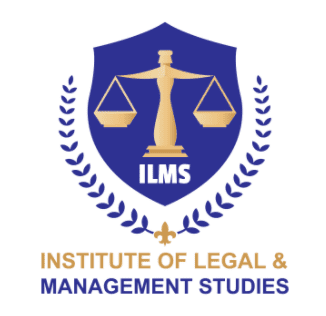The recent constitutional amendment Act, 2019 amends Articles 15 and 16 and pays way for reservation of economically backward classes. The 124th Constitutional Amendment Bill was introduced with the aim of providing 10% reservation to the economically weaker sections of the society. On 13th January 2018, it received the President’s assent after it was passed in the Lok Sabha with 326 members present (3 members voting against) and by the Rajya Sabha. It provides for reservation in the job sector and educational institutions public and private institutes whether aided or unaided. It is in addition to the existing reservation. The said amendment has stirred controversies across the country and also conflicts with the judicial response. This article analysis the 124th Constitutional Amendment Bill now incorporated as the 103rd Amendment Act, 2019 and the controversies that it is surrounded by.
Article 15 essentially deals with prohibition of discrimination on grounds such as race, sex, caste, religion and so on. However the same article gives power to the state and central governments to make special provisions for the protection of socially and educationally backward
classes. Nowhere did it speak about economic criteria. Some earlier attempts to have reservation on the basis of economic backwardness was initiated by P.V. Narasimha Rao in 1991 who proposed a 10% reservation for the poor among the forward classes. But here, the judiciary rejected the proposal as it would vitiate Article 15(4), because it only dealt with socially and educationally backward classes. Additionally, it would violate the 50% ceiling evolved by the judiciary and the same was observed in the Indra Sawhney v. Union of India,1, wherein a 9 judges bench unanimously held that reservation cannot be solely based on economic criteria.
The Amendment Act, 2019 adds Article 15(6) and Article 16(6). Article 15(6) provides reservation to economically weaker section of the forward class in relation to admission to public or private educational institutions (aided or unaided). However, it does not extend to the minority educational institutions under clause 1 of Article 30. So, Article 15(6) covers those not covered under Articles 15(4) and (5). Whereas Article 16(6) is aimed at providing reservation to the economically weaker sections of the society. Since, employment and education are subjects under concurrent list, States have to ratify it before implementing the 10% reservation quota. Gujarat became one of the foremost States to implement this reservation scheme in its state. This amendment makes it possible to realize the objectives of Article 46 as earlier majority of the economically weaker class were not receiving their entitlements.
‘Economic criteria’ is determined on the basis of family income and other indicators of economic income notified by the States from time to time. The bill defines the economically backward section as one having:
Annual household income below Rs. 8 lakh.
Agricultural land below 5 acres.
Ongoing Enrollments:- Certificate Course in Labour Laws
- Certificate Course in Drafting of Pleadings
- Certificate Programme in Train The Trainer (TTT) PoSH
- Certificate course in Contract Drafting
- Certificate Course in HRM (Human Resource Management)
- Online Certificate course on RTI (English/हिंदी)
- Guide to setup Startup in India
- HR Analytics Certification Course
Residential house below 1000 sq ft.
Residential plot below 100 yards in notified municipality.
Residential plot below 200 yards in non- notified municipality area.2
On one hand such reservation helps to give opportunities to the upper class people who due to economic crisis cannot afford good education. It eliminates the stigma associated with reservation as many used to look down on persons who availed the reservation. There are many upper class persons in India who are who live in poverty and hunger, so this reservation helps in bringing equilibrium to a certain extent.
On the other hand, the 10% reservation increases challenges for the actually talented and open category individuals. In States like Karnataka and Tamil Nadu the existing reservation is above 50% and 10% reservation on top of this curtails the opportunities from the deserved ones. Further, it is in stark contrast with the Indra Sawhney case. In the case of M Nagaraj v. Union of India3, it was held that “inadequacy of representation is a constitutional requirement without which the structure of equality of opportunity would collapse.”4 Furthermore, there is a challenge in determining the economically backward class people. The factors may vary and people might misuse it too.
To sum up, the 103rd Amendment Act, 2019 is a good initiative in protecting the economically disadvantaged section of the society, but it is a flawed concept in the long run. When reservation percentage alone is above 50 percentages, then a good amount of deserving and talented population flee the country in hope of better opportunities to other developed countries. This causes a drain in the resources that India have. Also, the caste based reservation was initially introduced for a period of 10 years and even now it continues. At present there are a lot of people trying to put an end to such reservations and to have only one kind of reservation that is merit based. This in turn will help our country to flourish.
(1992) 3 SCC 217. ↩
Constitution (103rd Amendment) Act, 2019, NammaKPSC, (Jul 22, 2021, 6:04pm), https://nammakpsc.com/constitution-103rd-amendment-act-2019/. ↩
Writ Petition (civil) 61 of 2002 ↩
Id. ↩
- Certificate Course in Labour Laws
- Certificate Course in Drafting of Pleadings
- Certificate Programme in Train The Trainer (TTT) PoSH
- Certificate course in Contract Drafting
- Certificate Course in HRM (Human Resource Management)
- Online Certificate course on RTI (English/हिंदी)
- Guide to setup Startup in India
- HR Analytics Certification Course

